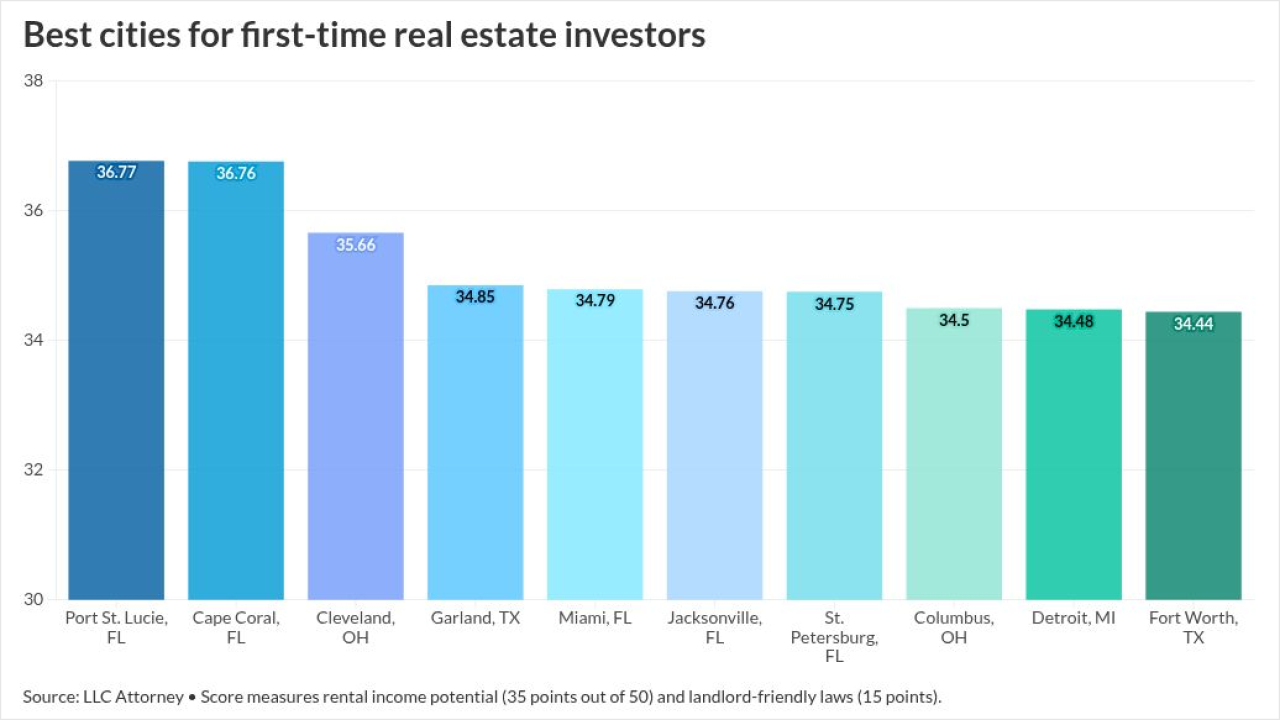Recent swings in interest rates and home prices have put downward pressure on homebuyers' purchasing power. Lenders that don't proactively educate consumers on how these rapidly changing market conditions can affect their mortgages risk deals falling apart and shrinking prospect pipelines.
Consumers who went to a lender last fall to get preapproved for a mortgage before starting their home search this spring might be surprised to discover they are no longer eligible for the same loan terms they were first offered.
"There will

Loan officers need to "educate people to let them know that volatility in rate can affect their buying power and make sure that they are not on the cusp of being approvable," said Peter Grabel, the managing director at Stamford, Conn.-based Luxury Mortgage.
Grabel created a handout on impact of interest rate increases on borrowers' monthly mortgage payments. Since much of his market in the metro New York City area is high end borrowers, one chart shows the cost per month to borrow $1 million at 12.5 basis point increments between 3% and 5%, while the other is how much a borrower can get if they are looking for a $5,000 per month payment.
"Over the next few weeks people might realize that they can't afford what they thought they could a few months ago," Grabel said.
Even before the rate hike, there was
The problem is especially acute for first-time homebuyers, the segment of the market with the least amount of wiggle room for unexpected changes. For starter homes and trade-up homes, the failure rate for 2016 home sales in each category was 6.3%, compared with 3.4% in 2015. Trulia uses an aggregate method involving the top 100 metro areas to determine the category boundaries on a national basis. Detroit had the lowest home values in the trade up category, between $43,525 and $106,983, while San Francisco had the highest, between $904,086 and $1.38 million.
The fourth quarter had the highest failure rate over the past two years for starter homes at 7.1%, up from 6.5% in the third quarter, 3.9% in the fourth quarter of 2015 and 2.4% in the fourth quarter of 2014.
The failure rate for trade-up properties was 6.7% in the fourth quarter, unchanged from the third quarter, but up from 3.6% in 2015's fourth quarter and 2.4% for the same period in 2014.
For premium homes, the failure rate was 3.6% for all of 2016, versus 2.1% in 2015. The fourth quarter failure rate of 3.8% was lower than the prior two quarters, but up from 2.0% in the fourth quarter of 2015 and 1.5% in the fourth quarter of 2014.
A
Interest rate movements should become less volatile in the not-too-distant future now that the transition to the Trump presidency has been completed, Deery said. But in the short term, "there is definitely going to be some kind of payment shock with the spike in rates, but it's going to be a temporary phenomenon after the first quarter as the market will be stabilizing. That phenomenon will go away and the market will be back to normal.
"But we're entering a new world right now and who really knows what's behind the curtains over the next year," he added.

Even as real estate transactions have fallen apart at a greater pace in 2016, loan closing rates as measured by Ellie Mae have improved both year-over-year between 2016 and 2015 for December and on the month-to-month comparison in the fourth quarter.
Ellie Mae's monthly data includes all loans closed in the previous 90 days. But because average time for a loan to go
Once buyers reach the application stage, they are more likely to push to get their deals closed, said Jonathan Corr, the president and CEO at the Pleasanton, Calif.-based company.
That deep into the process, borrowers are not likely to change their minds because of rate movements.
"If rates are starting to rise folks are going to follow through on their loans. It could very well be that as we're seeing more first-time home buyers, do they tend to have a different pull-through rate than the broad population?" Corr asked rhetorically, noting that Ellie Mae currently didn't break out its data for that information.




